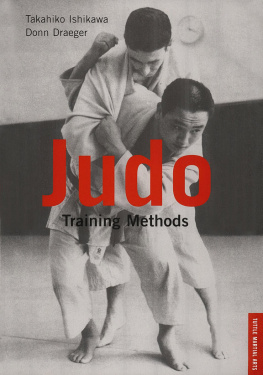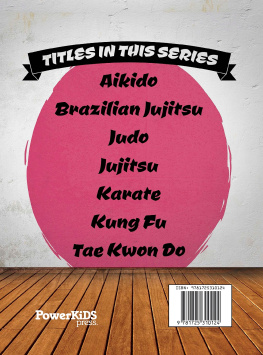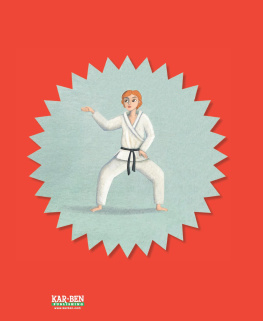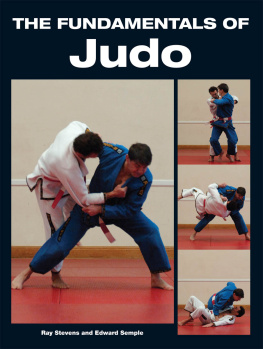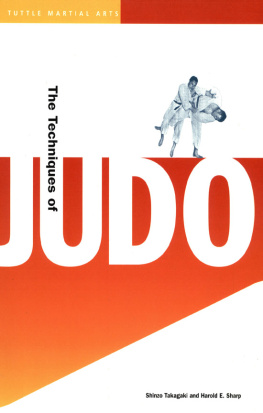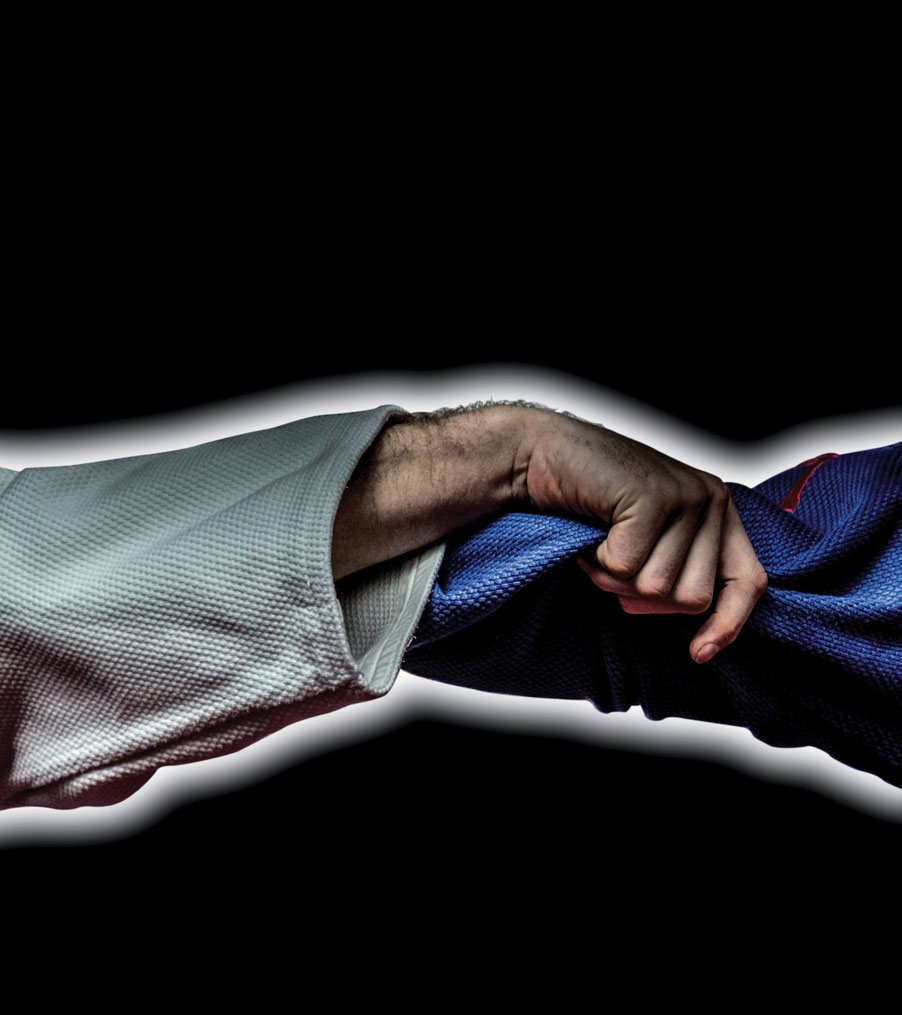STRENGTH
AND
CONDITIONING
FOR
JUDO
STRENGTH
AND
CONDITIONING
FOR
JUDO
ANDY BURNS AND MIKE CALLAN
THE CROWOOD PRESS
First published in 2017 by
The Crowood Press Ltd
Ramsbury, Marlborough
Wiltshire SN8 2HR
www.crowood.com
This e-book first published in 2017
Mike Callan and Andrew Burns 2017
All rights reserved. No part of this publication may be reproduced or transmitted in any form or by any means, electronic or mechanical, including photocopy, recording, or any information storage and retrieval system, without permission in writing from the publishers.
British Library Cataloguing-in-Publication Data
A catalogue record for this book is available from the British Library.
ISBN 978 1 78500 257 1
Photographs by Joda Callan
CONTENTS
FOREWORD
Iam pleased to write the foreword for this first collaboration between Andrew Burns and Mike Callan. I met both authors during my study in England. Knowing both of the authors, I am pleased that they have been able to share their expertise through the production of this book.
Particularly, I note the correct use of Japanese terminology throughout this book, which combined with the excellent photographs and technical content, means that this is a valuable reference work for any coach wishing to increase their understanding, or athlete wishing to improve his or her strength and fitness.
Of course, judo is both a Japanese educational method and a modern Olympic sport. The use of strength and conditioning for judo was pioneered by a Japanese former Olympic champion, Mr Isao Inokuma, who is well known for his powerful technique.
I can recommend this book for use by all judoka, athletes, teachers and coaches. I have no doubt that this book will be of great use in helping achieve greater success on the mat, and also a greater understanding of the educational value of judo.
Kosei Inoue, Olympic Champion,
3 World Champion, 3 All-Japan Champion
Head Coach, All-Japan Judo Team.
Lecturer, Tokai University
ACKNOWLEDGEMENTS
ANDREW BURNS
The idea for this book came about while studying for my MSc in Strength and Conditioning at Edinburgh University. I had to undertake a lot of research into judo specific studies, and came to the realization that not much of the updated science of training for judo is filtered down to club coaches. There appeared to be a need to disseminate the data and studies into a text that could be read and understood without the need for higher education degrees.
I would like to thank first and foremost my co-author, Dr Mike Callan, for his guidance and expertise in putting thoughts, research and experiences on to paper and for his continued guidance throughout my sporting, academic and professional endeavours. I would also like to thank my many mentors past and present including the late Roy Inman OBE, Darren Warner and Jrgen Klinger for spiking my interest in the science of training. Thanks to Mateja Glusac for being such a willing uke. Last but not least, I have to acknowledge the support I received from my wife. I gave up a lot of time we could have spent together to complete this project, and without her facilitating the work it would have been a much more difficult task.
MIKE CALLAN
I first published on the topic of strength and conditioning for judo more than thirty years ago, as a contributor to the British Judo magazine, and I was asked to advise the national squad. Whilst scientific understanding has progressed, the fundamentals of strength training remain timeless. What is also unchanging is the unique and complex challenge of balancing gains in physical training with the technical and tactical requirements of a judoka.
I would like to thank Ben Rosenblatt, Jrgen Klinger, Greg Valentine, Kate Howey, Danny Williams and Allan Macdonald for taking the time to contribute to the concluding chapter and offering their valued expertise. Also thanks to Joda Callan, a great photographer, and former judoka, whose efforts made a significant impact on the quality of this work.
I pay tribute to my co-author, Andrew Burns. He committed to this book whilst competing on the IJF World Tour, catching opportunities to write on airplanes and in warm-up rooms and hotel lobbies.
I dedicate this book to the three men who have taught me about judo, and therefore about life. Roy Inman OBE, Syd Hoare and Nobuyuki Sato, thank you.
1INTRODUCTION
Judo is the way to the most effective use of both physical and spiritual strength. Jigoro Kano
This book is written for the judoka , the judo coach and the strength and conditioning coach. For the judoka , the book aims to help the reader to improve his or her effectiveness in the modern Olympic sport of judo. For the coach this book will help in the understanding of ways to achieve the small percentage advantages that can contribute towards a successful result. For the strength and conditioning coach, this book talks to you in a language you understand, helping you to apply your craft to judo in an effective way.
The guide is written in a way that is easy to navigate, to allow the reader to jump straight to an area of immediate interest. However, we have split each chapter and sequenced them in a logical order that means if you have time it would make sense to read the book from introduction to the end. This way you can pull all the knowledge and understanding you gain together at the conclusion and gain a clear picture as to how to plan the physical preparation for judo. Perhaps for yourself, for an athlete you coach or a whole team of players you will have a much greater understanding of the process and theory as well as example programmes and practical tips on how to implement them.
As strength and conditioning professionals we see four clear outcomes to our work:
To prevent injury
To promote professional standards in training and coaching
To improve sporting performance
To empower athletes with knowledge
The aim to improve sporting performance is lower down the list than you may have expected; this is because in judo as in many other sports, a key element of improved performance is time spent in the sport. So for judo, athletes will improve if they are fit and healthy and injury free, therefore allowing them ample time to be on the mat learning and developing all aspects of their abilities. It is the job of the coaches and strength and conditioning team to maximize the time spent training and to be as efficient as possible. Judo has a huge variety of attributes that need to be improved if we are to be successful. Preventing injury and promoting professional practice will allow the athletes the direct training time needed to get better.
By working smarter rather than harder, the athletes can apply one of the fundamental principles of judo: seiryoku zenyo, often translated as maximum efficient use of power.
DEFINITIONS



